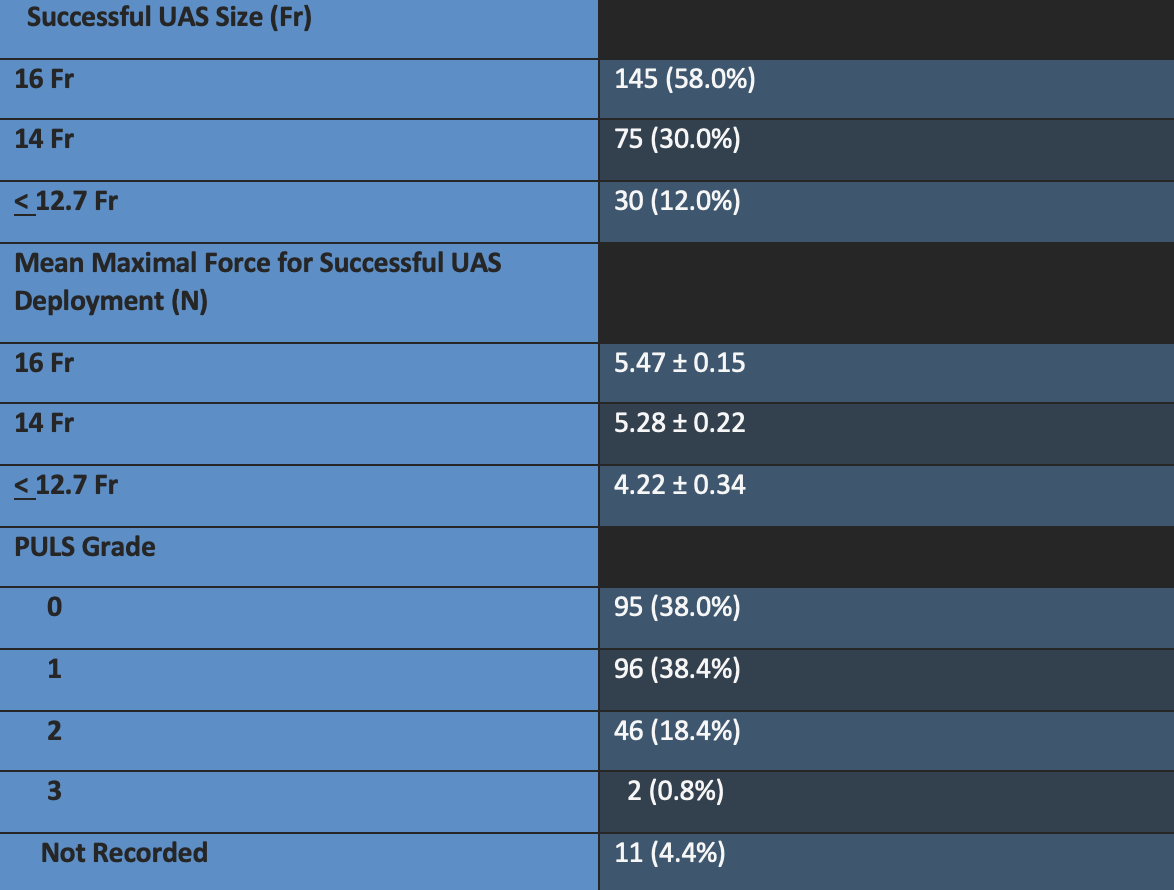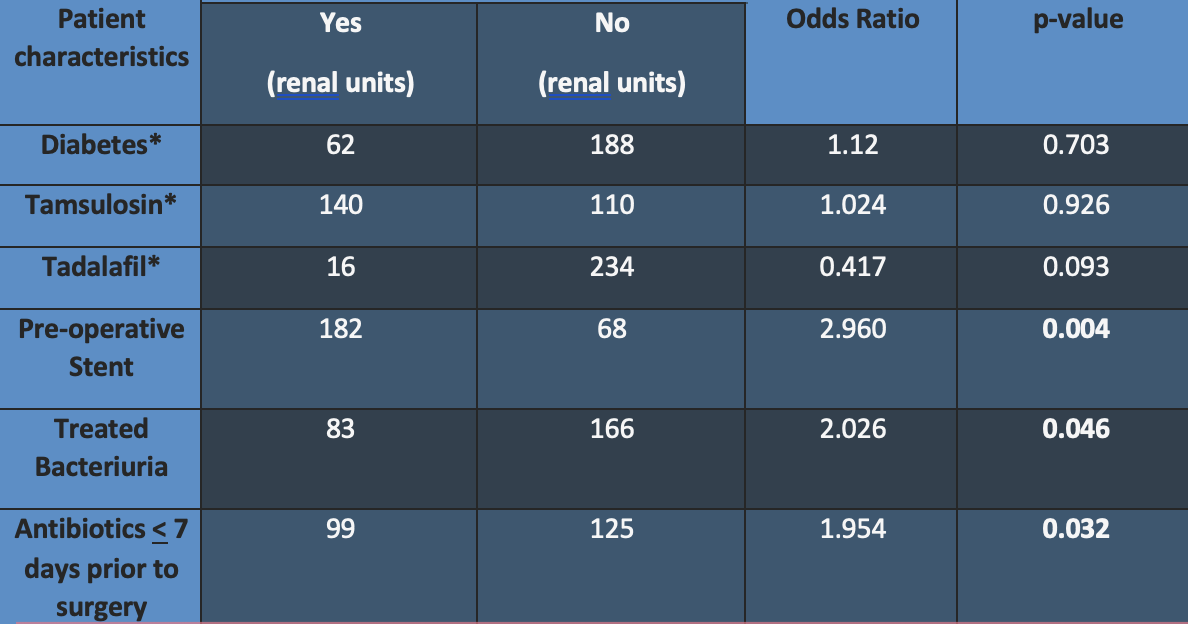This study was a continuation of their previous investigation where they found that ureteral injury can be averted by limiting insertion force to < 6 Newtons (N).4 They then used this predetermined force threshold as a marker for a successful (< 6 N) or unsuccessful (> 6 N) pass of a ureteral access sheath. A 16 Fr sheath was attempted first, but if it failed (> 6 N) the next smallest sheath was attempted. Post Ureteroscopic Lesion Scale was used to assess ureteral injury ranging from 0 (no injury) to 5 (complete ureteral disruption). This study included 238 patients (250 renal units) and the following results were obtained:


It was concluded that:
- For the 250 evaluated renal units, UAS insertion force < 6 N avoided PULS grade 3 or greater ureteral injury.
- Fifty-eight percent of ureters were able to pass a 16 Fr UAS.
- Pre-operative stenting, a history of treated bacteriuria, and pre-operative antibiotics were independent predictors of successful 16 Fr UAS deployment.
Written by: Amanda McCormac, BS, Junior Research Specialist Department of Urology, University of California, Irvine, CA during the 39th World Congress of Endo urology and Uro-Technology (WCET), Oct 1 - 4, 2022, San Diego, California.
References:
- Bozzini G, Bevilacqua L, Besana U, Calori A, Pastore A, Otero JR, Macchi A, Broggini P, Breda A, Gozen A, Inzillo R. Ureteral access sheath-related injuries vs. post-operative infections. Is sheath insertion always needed? A prospective randomized study to understand the lights and shadows of this practice. Actas Urológicas Españolas (English Edition). 2021 Nov 1;45(9):576-81.
- KOURAMBAS J, BYRNE RR, PREMINGER GM. Dose a ureteral access sheath facilitate ureteroscopy?. The Journal of urology. 2001 Mar;165(3):789-93.
- Auge BK, Pietrow PK, Lallas CD, Raj GV, Santa-Cruz RW, Preminger GM. Ureteral access sheath provides protection against elevated renal pressures during routine flexible ureteroscopic stone manipulation. Journal of endourology. 2004 Feb 1;18(1):33-6.
- Tapiero S, Kaler KS, Jiang P, Lu S, Cottone C, Patel RM, Okhunov Z, Klopfer MJ, Landman J, Clayman RV. Determining the Safety Threshold for the Passage of a Ureteral Access Sheath in Clinical Practice Using a Purpose-Built Force Sensor. J Urol. 2021 Aug;206(2):364-372. doi: 10.1097/JU.0000000000001719. Epub 2021 Mar 29. PMID: 33780267.


